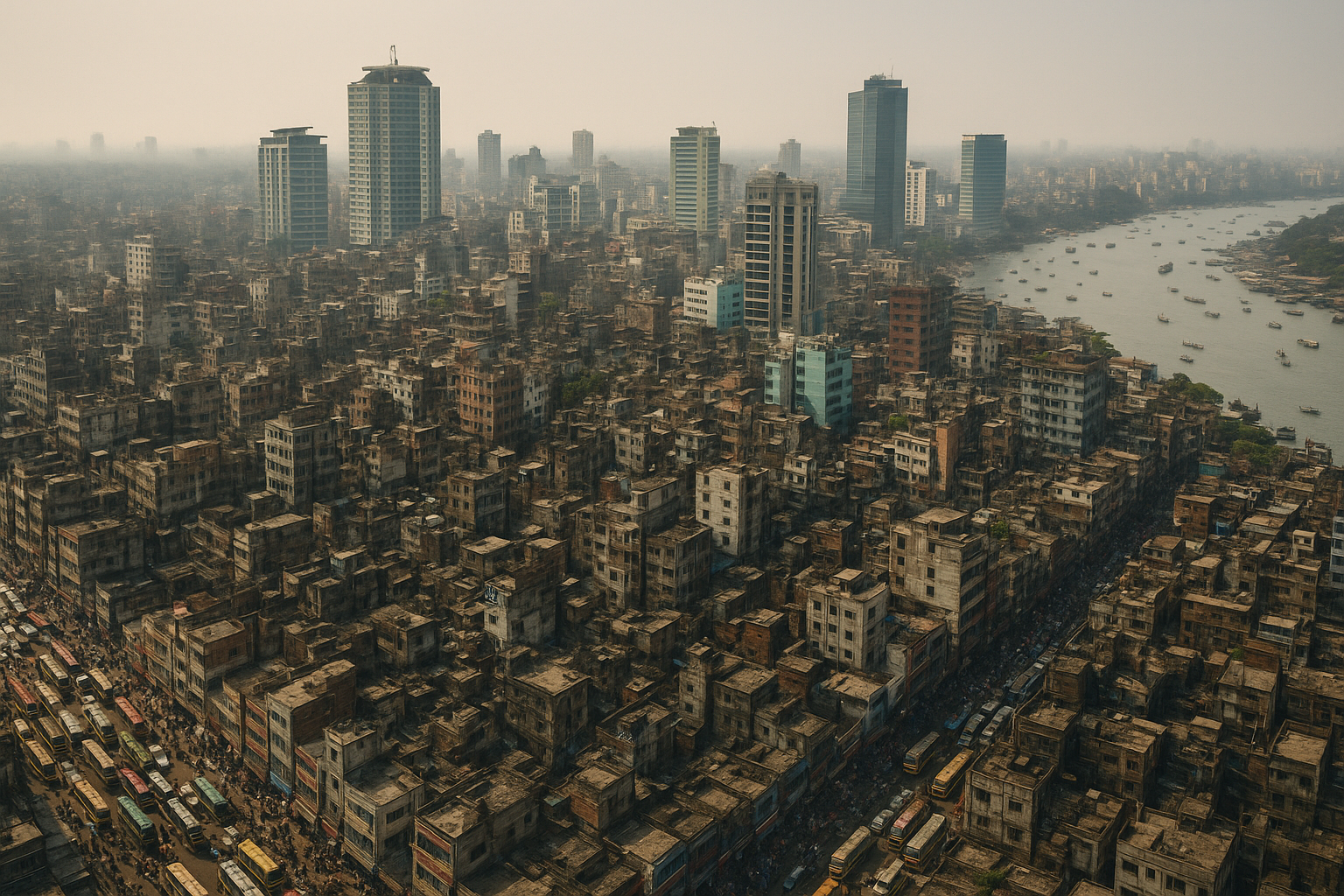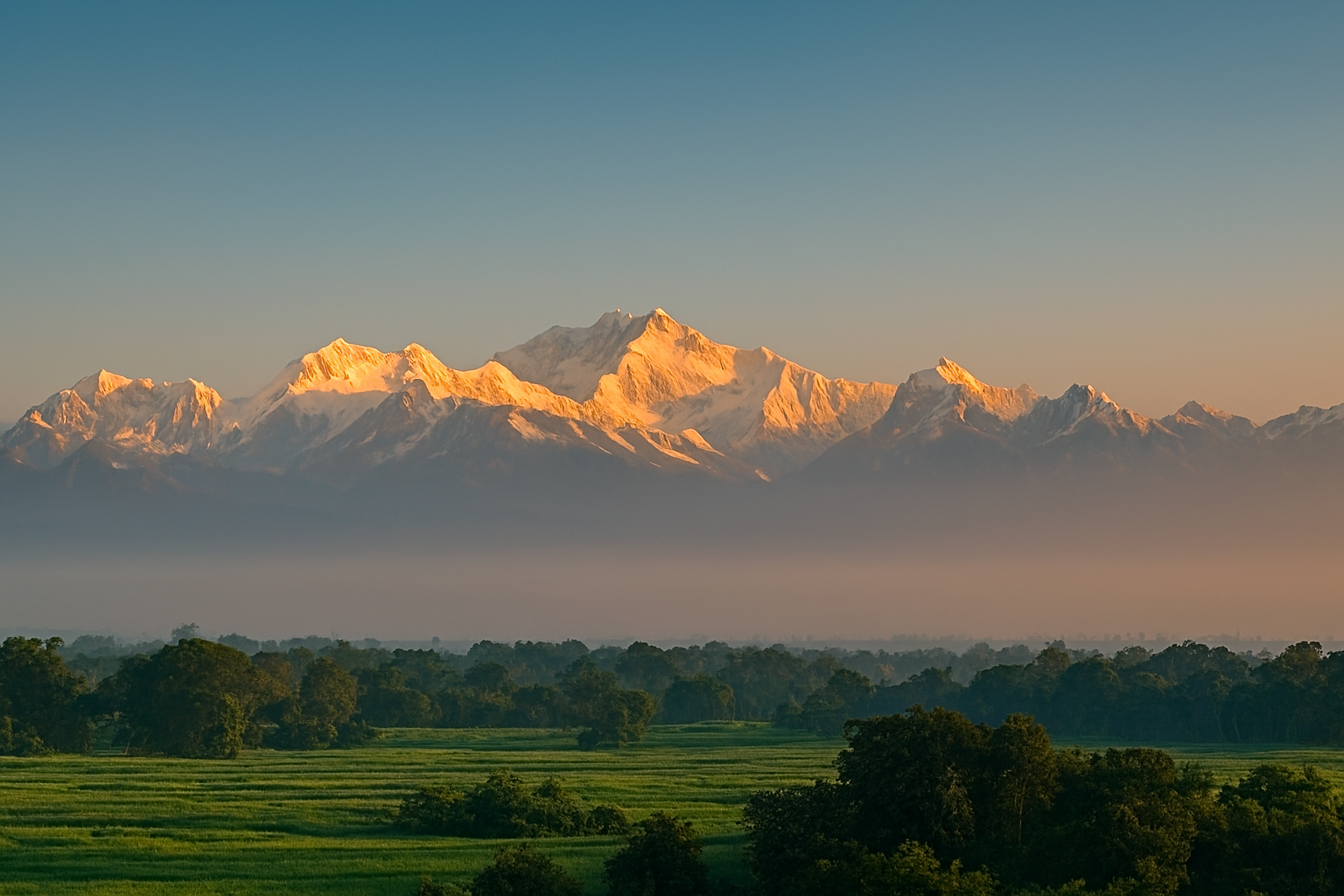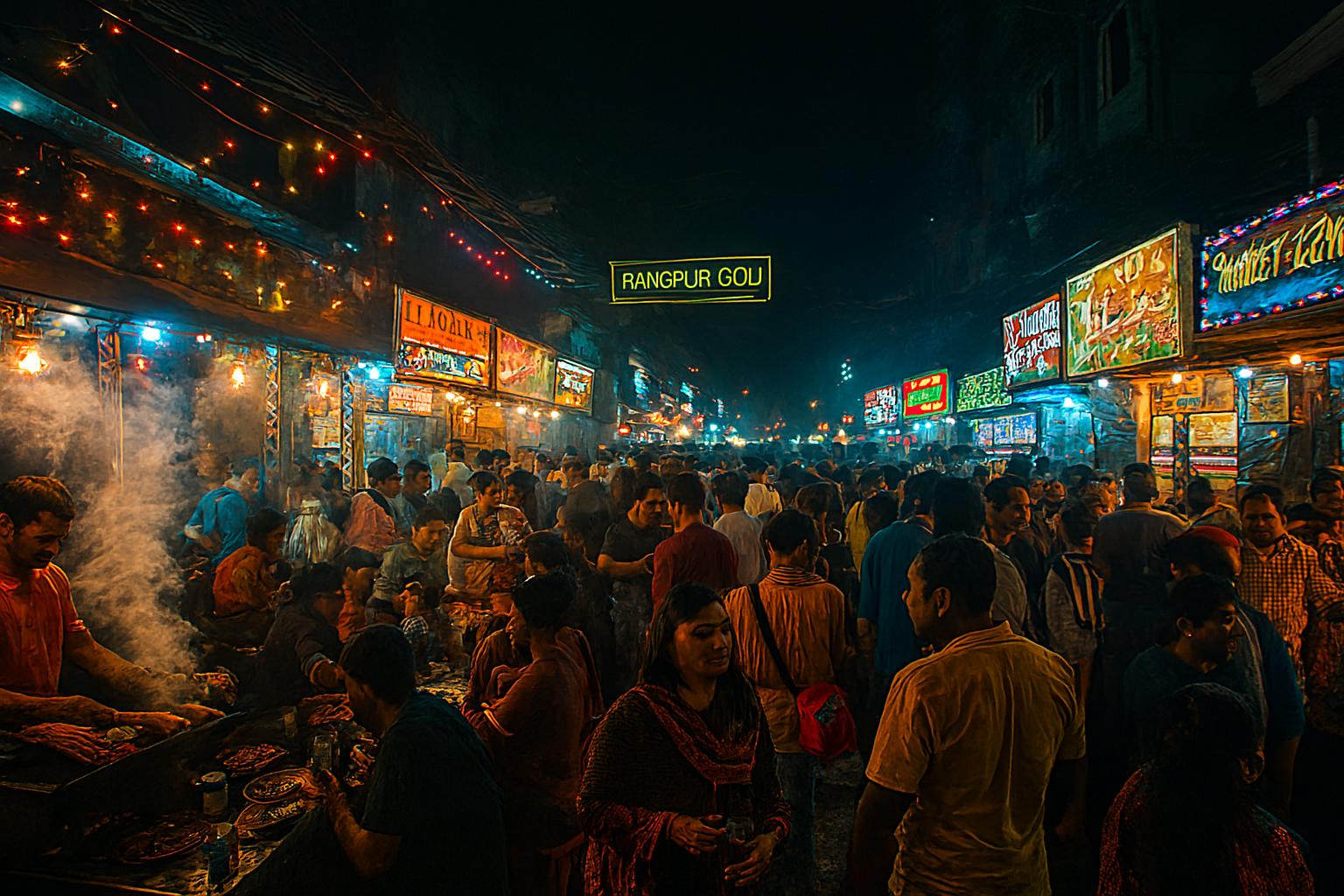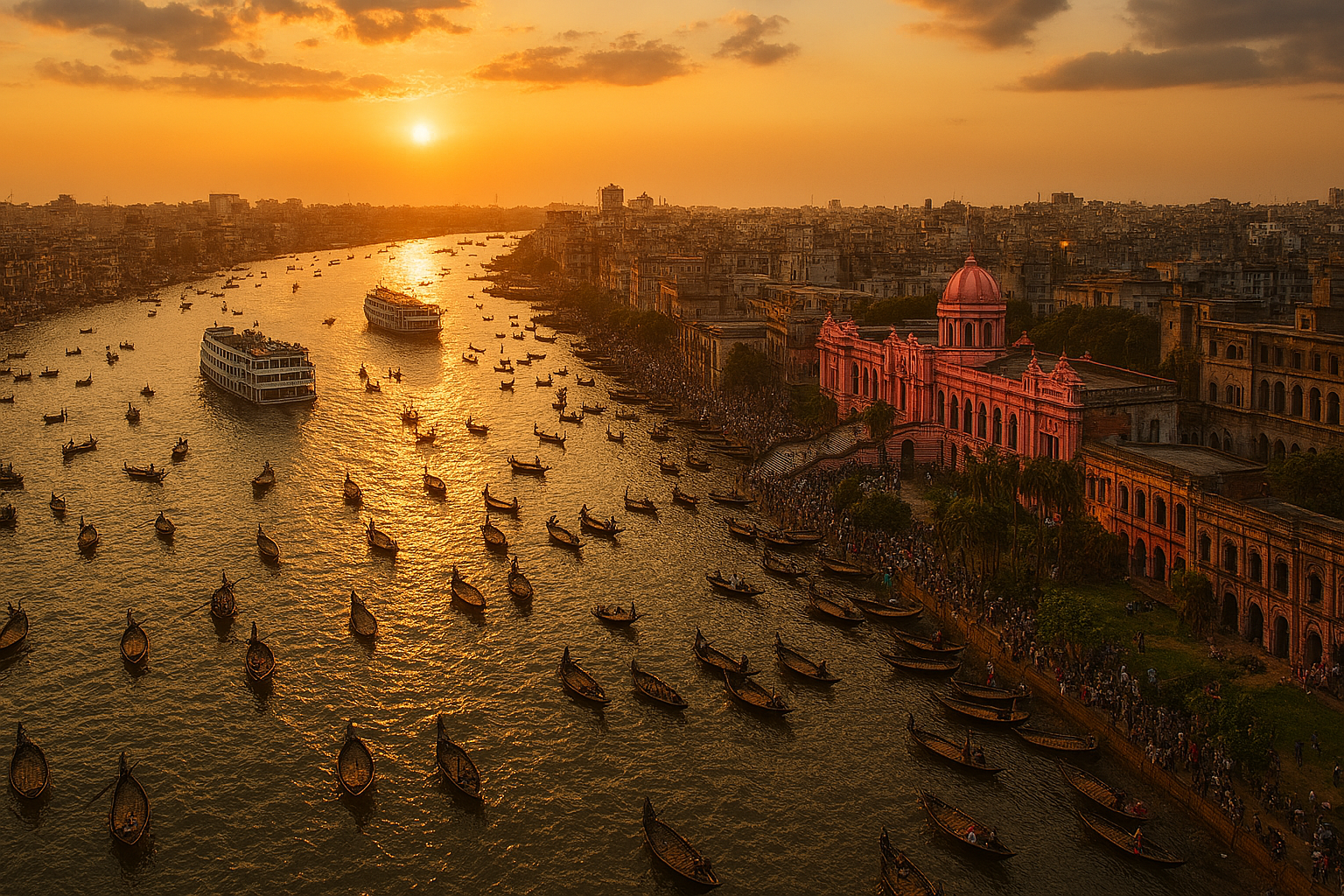Kanchenjunga Shines Over Panchagarh: A Rare Himalayan View
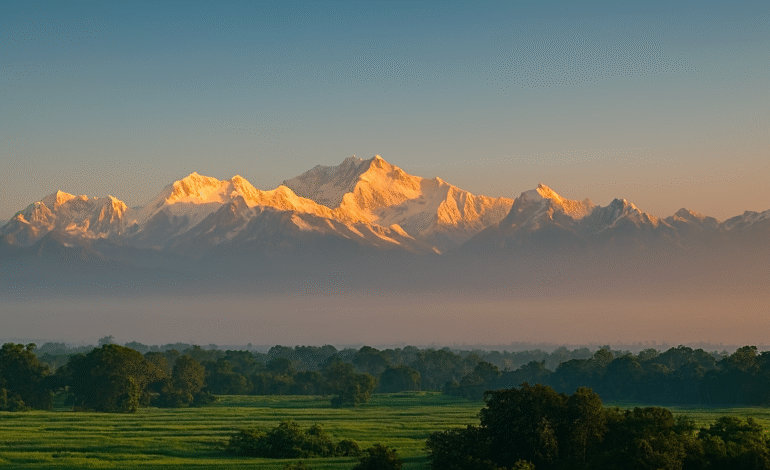
Kanchenjunga Sights from Panchagarh: Nature’s Majestic Reveal
When the skies over northern Bangladesh clear, a breathtaking spectacle unfolds in Panchagarh district: the snow-capped peaks of Kanchenjunga appear on the distant horizon. In 2025, unusually low rainfall and clear skies have granted frequent glimpses of this majestic Himalayan giant from Bangladeshi soil — a visual treat that has excited locals, tourists, and photographers alike.
A Rare View from Bangladesh
Kanchenjunga, the world’s third-highest mountain at 8,586 meters (28,169 feet), lies on the border between Nepal and the Indian state of Sikkim. Though far away, under favorable conditions its twin peaks are visible from certain parts of Panchagarh, especially the Tentulia area. Each year, around late autumn and early winter, as the monsoon rains recede and skies clear, Kanchenjunga makes fleeting appearances over the horizon, often looking like a distant frozen silhouette floating in the sky.
In 2025, the mountain began to emerge in view as early as September — earlier than in many prior years. Due to reduced rainfall in the north, the skies remained clearer than usual, allowing better visibility. Local observers report that Kanchenjunga’s bluish glow, sharply etched against the sky, has been visible at various times during the day.
Panchagarh’s Emerging Tourist Appeal
The growing visibility of Kanchenjunga is bolstering tourism in Panchagarh, especially in Tentulia. Tourists come to view the Himalayan peaks without needing to cross the international border into Nepal or India. Locations such as the Dak Bungalow picnic spot and banks of the Mahananda River have become favored vantage points, drawing photographers and nature lovers. Locals capture images and videos of the peaks and share them widely on social media, amplifying interest and drawing more visitors.
Officials in Tentulia have recognized the potential. Tourist police maintain a presence in vantage areas, with contact numbers displayed around the district to help visitors. The Upazila Nirbahi Officer (UNO) of Tentulia has affirmed government efforts to make the tourist experience comfortable and safe. With better promotion and infrastructure, Panchagarh aims to grow as a notable domestic tourism hub for Himalayan views.
Seasonal Patterns & Visual Splendor
Kanchenjunga’s visibility from Bangladesh is not constant. Several climatic and seasonal factors influence when and how clearly it can be seen:
After the heavy rains of Ashar and Shraban (mid-monsoon months), skies begin to clear in Bhadra (roughly September), gradually opening up views toward the north.
In the Bangla seasons Sharad and Hemanta (post-monsoon fall and early winter), and into winter, the peaks remain more consistently visible, their snow-clad forms glowing in changing hues: crimson at dawn, orange and yellow in early light, then brilliant white in full daylight.
On exceptionally clear days, the Himalayan line extends beyond Kanchenjunga itself, with other Himalayan ridges also faintly visible.
The effect is usually ethereal — the peaks appear almost dreamlike, as if hovering on the skyline, their crisp edges softened by atmospheric haze but unmistakably striking.
Challenges & Considerations
While the vistas are magical, a few challenges and cautions accompany this phenomenon:
Weather variability: Visibility depends heavily on precipitation, cloud cover, dust, and air quality. After rains or on hazy days, the peaks vanish from sight again.
Infrastructure: Many of the viewing points still lack robust tourist infrastructure — viewpoints, signage, walkways, rest areas, and amenities need development.
Management & crowd control: With increased attention, managing visitor flow, safety, and preservation of natural spots will be necessary to avoid degradation.
Promotion & outreach: Awareness among domestic tourists is still nascent. Better promotion would bring more visitors, but must be balanced with sustainable practices.
Why This Matters
The emergence of Kanchenjunga in Panchagarh is more than a visual spectacle. It opens new possibilities:
Boost to local economy: Tourism brings business to hotels, transport, food vendors, guides, and local artisans.
Cultural pride & identity: The ability to see a Himalayan giant from Bangladesh can deepen local pride and identity, tying communities to the broader Himalayan geography.
Environmental awareness: Visitors may become more aware of climate, air quality, and conservation issues that affect visibility and regional ecology.
Domestic tourism growth: Such unique natural phenomena can help shift travel interest inward — encouraging Bangladeshis to explore their own land’s unexpected wonders.
Best Practices for Visitors & Authorities
To make the most of this phenomenon, several best practices should be considered:
Timing is key
Plan visits in late September through December, when skies tend to clear and visibility is more reliable. Monitor weather forecasts and choose early mornings, when atmospheric clarity is higher.Promote designated viewpoints
Develop and maintain scenic spots like Dak Bungalow, riverside banks, and hillock areas with safe walking paths, benches, shade, and information boards.Marketing & awareness campaigns
Use social media, travel blogs, local outreach, and partnerships with travel agencies to inform people about viewing seasons, how to visit, and what to expect.Regulate and guide tourism
Train local guides, enforce visitor regulations, limit overcrowding, manage waste, and ensure visitor safety. Tourist police and local authorities already active should expand support.Sustainable infrastructure
Provide basic facilities — restrooms, shelters, trash bins — without disturbing natural surroundings. Use eco-friendly construction and signage.Environmental protection
Maintain clean air, restrict polluting activities around vantage zones, monitor air quality, and promote tree cover and green buffers to preserve clarity of views.
